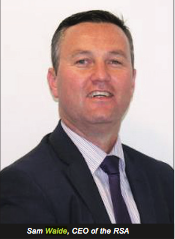An Garda Síochána and the Road Safety Authority (RSA) are urging motorists to reduce their speed and be mindful of vulnerable road users ahead of ‘Slow Down Day’, a national speed enforcement operation for a 24-hour period on 7am, Thursday (21st October) to 7am on Friday (22nd October 2021).
The overall objective of “Slow Down Day” is to reduce the number of speed related collisions, save lives and reduce injuries on Ireland’s roads. International research has estimated that speeding is a factor in 30% of fatal collisions.
An Garda Síochána will be focusing its enforcement activity across all speed limit zones, there will be a focus on rural roads. This is because almost 78% of fatalities so far this year have occurred on rural roads.
Minister of State at the Department of Transport, Ms. Hildegarde Naughton said, “I am asking drivers to support National ‘Slow Down’ Day this week and every day by easing off on the accelerator. Slowing down saves lives and even small reductions in speed can help avoid a collision in the first place, and reduce the severity of a collision. I am also urging all road users to take extra care over the Bank Holiday Weekend as the clocks go back. With evenings getting darker earlier now it’s important to look out for each other and be seen when on the road.”
Mr Sam Waide, CEO of the Road Safety Authority said: “A speed limit is there to keep road users safe, it is the maximum legal speed that a driver can travel on a given road type. However, it is not a target. You should always choose a speed that is appropriate to the conditions and your experience. By slowing down you give yourself time and space to react in an emergency. The faster you drive, the more likely you are to be involved in a collision which could result in death or serious injury. This is particularly true for vulnerable road users. If hit at 60km/h 9 out of 10 pedestrians will be killed. Hit at 30km/h 9 out of 10 will survive.”
Mr. Waide concluded, “With clocks going back this weekend, motorists also need to be mindful that the visibility of vulnerable road users on our roads will be reduced. Motorists need to take care and remember that they are sharing the road with pedestrians, cyclists and motorcyclists who can be difficult to see in poor lighting or in darkness. Cyclists and pedestrians can increase their visibility on the roads by wearing reflective clothing. In dark clothing, a pedestrian or cyclist is only likely to be visible 30 metres away, in low beam headlights. By wearing something reflective they become visible at 150 metres away, the length of a football pitch.”

